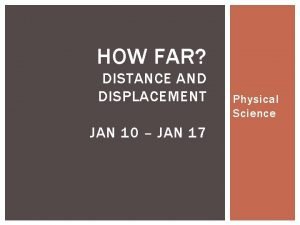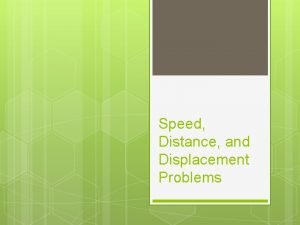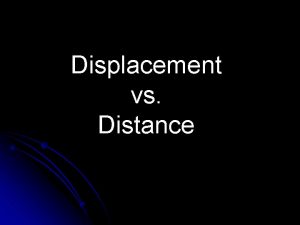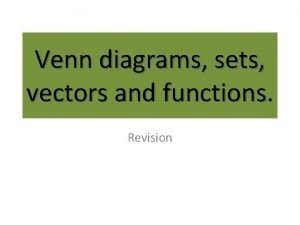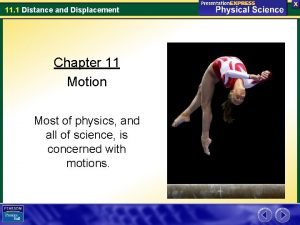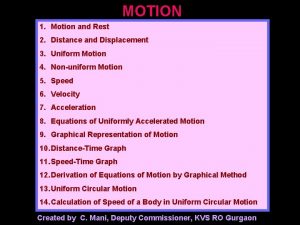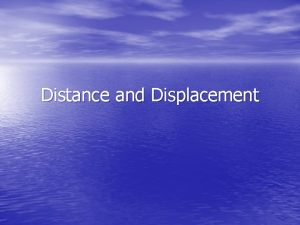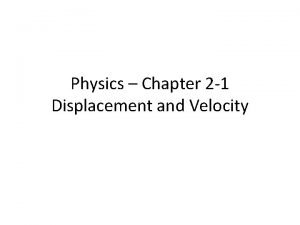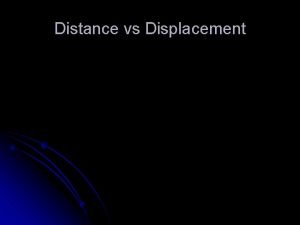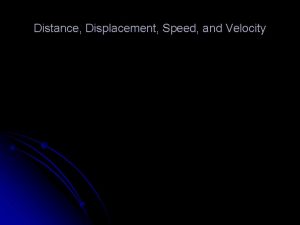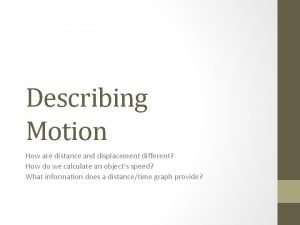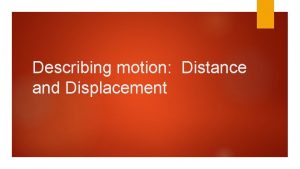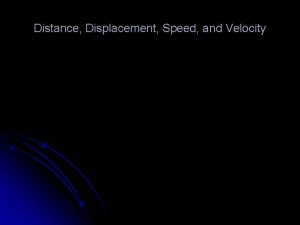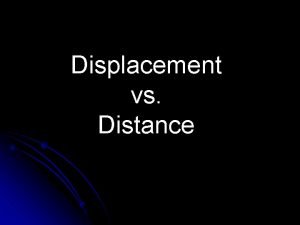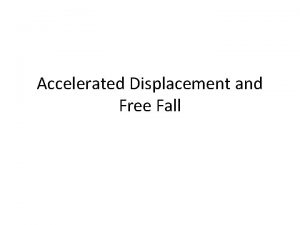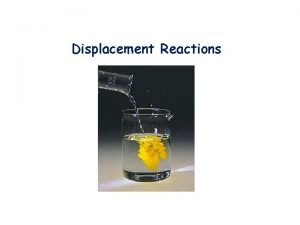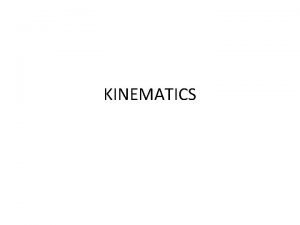4 Distance and displacement displacement as an example











- Slides: 11

4. Distance and displacement (displacement as an example of a vector) Example 1: The distance between points A and B is equal to the distance between A and C. B A C In contrast, the displacement from point A to point B is not equal to the displacement from A to C. Example 2: For the motion around a closed loop (from A to A) the displacement is zero, but the distance is not equal to zero. A Distance - fundamental physical quantity measured in units of length. Displacement - physical quantity that should be described by both its magnitude (measured in units of length) and direction. Distance is an example of a scalar quantity. Displacement is an example of a vector quantity. Scalars have numerical value only (one number). Vectors have magnitude and direction (at least two numbers). 1

Question 1: You and your dog go for a walk to the park. On the way, your dog takes many side trips to chase squirrels or examine fire hydrants. a) When you arrive at the park, do you and your dog have the same displacement? Yes No b) Have you and your dog traveled the same distance? No Yes Question 2: Does the displacement of an object depend on the specific location of the origin of the coordinate system? 1) yes, 2) No 10 20 30 40 50 60 70 3) It depends on the coordinate system Since the displacement is the difference between two vectors, the origin does not matter. 2

5. Vectors • A vector has magnitude as well as direction • Some vector quantities: displacement, velocity, force • A scalar has only magnitude and sign • Some scalar quantities: time, temperature, mass Geometric presentation: Notations: - letter with arrow; a – bold font Magnitude (length of the vector): Some properties: 3

5 a. Vector addition (geometric) Two vectors: Several vectors Subtraction 4

Question 1: Which of the following arrangements will produce the largest resultant when the two vectors of the same magnitude are added? A B C Question 2: A person walks 3. 0 mi north and then 4. 0 mi west. The length and direction of the net displacement of the person are: 1) 25 mi and 45˚ north of east 2) 5 mi and 37˚ north of west 3) 5 mi and 37˚ west of north 4) 7 mi and 77˚ south of west β = 37˚<45˚ ϴ= 53˚> 45˚ β Question 3: Consider the following three vectors: What is the correct relationship between the three vectors? 5

5 b. Vectors and system of coordinates 2 D: y x 3 D: y x z 6

6. Average speed and velocity a) Average speed Definition: (total distance over total time) b) Average velocity Definition: (total displacement over total time) x-component of velocity: 7

7. Instantaneous speed and velocity (Speed and velocity at a given point) a) Instantaneous speed Definition: b) Instantaneous velocity Definition: The magnitude of instantaneous velocity is equal to the instantaneous speed In contrast, the magnitude of average velocity is not necessarily equal to the average speed 8

8. Geometric interpretation a) One dimensional motion with constant velocity t Velocity is equal to the slope of the graph (rise over run): distance over time. Question: The graph of position versus time for a car is given above. The velocity of the car is positive or negative? 9

b) Motion with changing velocity C x B A t Instantaneous velocity is equal to the slope of the line tangent to the graph. (When Δt becomes smaller and smaller, point B becomes closer and closer to the point A, and, eventually, line AB coincides with tangent line AC. ) Question: The graph of position versus time for a car is given above. The velocity of the car is positive or negative? Is it increasing or decreasing? 10

Lecture outline • Distance and displacement • Vectors • Vector addition (geometric) • Vectors and system of coordinates • Average speed and velocity • Instantaneous speed and velocity • Geometric interpretation • One dimensional motion with constant velocity • Motion with changing velocity 11
 How to solve for displacement
How to solve for displacement Single displacement vs double displacement
Single displacement vs double displacement John drove south 120 km at 60 km/h
John drove south 120 km at 60 km/h Distance and displacement
Distance and displacement Venn diagram for a union b whole complement
Venn diagram for a union b whole complement 11.1 distance and displacement
11.1 distance and displacement Comic strip showing uniformly accelerated motion
Comic strip showing uniformly accelerated motion Distance vs displacement
Distance vs displacement Displacement formula distance
Displacement formula distance Distance vs displacement
Distance vs displacement Distance vs displacement
Distance vs displacement How is distance different from displacement
How is distance different from displacement
